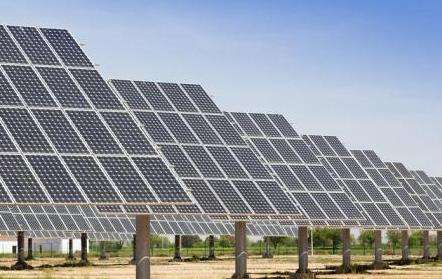First of all, we need to know how the DC generator generates electricity in order to correctly understand the method of connecting to light.
Like an alternator, a DC generator generates electricity based on the principle that wires cut magnetic lines of force to generate an induced electromotive force. In fact, in the final analysis, there are two commutators installed at both ends of the armature coil of the alternator, and there are two commutator segments on the commutator that are isolated from each other. Electricity from the alternator armature coil is connected to two commutator segments isolated from each other. There are two fixed brushes on the two commutators, and these two brushes are in sliding contact with the commutator segments. In this way, electricity from the armature coil is sent to the external load through the two fixed brushes.
Consequentlyt, when we connect a lamp to an ordinary DC generator, it can be connected to the lead wires of the two brushes of the generator
The transverse flux of bulb What is the outer diameter of the stator of a generator to hydraulic turbine
The simplest homemade generator:
1. , stick a plastic ruler on the wooden board, then cut the wire into small sections and stick them one by one on the edge of the disc.
2. Then stick the bottle cap to the middle of the disc, drill a hole in the middle, install the screws, then fix it on the ruler.
3. Then attach another screw to the wire and the small bulb, secure it on the ruler with a rubber band and continue to turn it. You will notice that the little bulb lights up and a small one. The generator is finished.
Generators refer to mechanical equipment that converts other forms of energy into electrical energy. They enteredpowered by water turbines, steam turbines, diesel engines or other electrical machines, and generate water flow, air flow, fuel combustion or nuclear fission. The energy is converted into mechanical energy and transmitted to the generator, which is then converted into electrical energy.
Generators are widely used in industrial and agricultural production, national defense, science and technology and daily life. There are many forms of generators, but their operating principles are all based on the law of electromagnetic induction and the law of electromagnetic force. Therefore, the general principle of its construction is: using suitable magnetic and conductive materials to form magnetic circuits and circuits that conduct electromagnetic induction among themselves to generate electromagnetic energy and achieve the conversion goal energyie.
Main structure:
1. Generators are generally composed of stators, rotors, end covers, bearings and other components.
2. The stator consists of the stator core, wire windings, machine base and other structural parts that secure these parts.
3. The rotor is composed of the rotor core winding (or magnetic pole, magnetic choke), retaining ring, center ring, slip ring, fan and rotating shaft.
4. The stator and rotor of the generator are connected and assembled by the bearings and end covers, so that the rotor can rotate in the stator and carry out the cutting movement of the magnetic lines of force, thereby generating induced electric potential, which comes out through the terminals and is connected in the loop, current is generated. ?
Above 7560 mm. Bulb Tubular Hydraulic WheelOne Kindtubular turbine in which the generator is placed in the bulb body in the flow channel. The stator outer diameter is more than 7560mm, the core length is more than 1400mm, and the rated capacity is more than 35000kva. In order to improve the cooling effect of the rotor, a "cooling fin" is proposed, styled as a new rotor pole coil. In the bulb tubular turbine generator, water flows into the channel around the bulb body, and then flows out of the straight conical suction pipe. The leaves of the water guide are generally conical.














